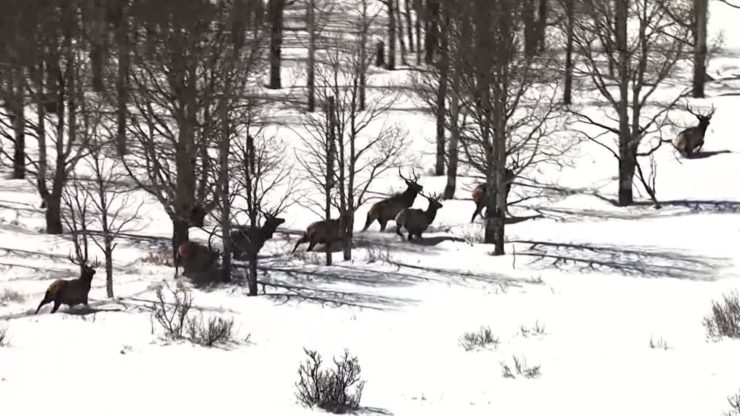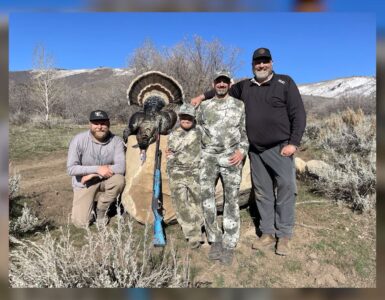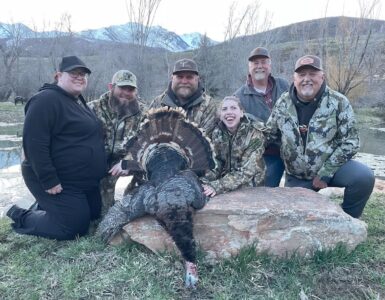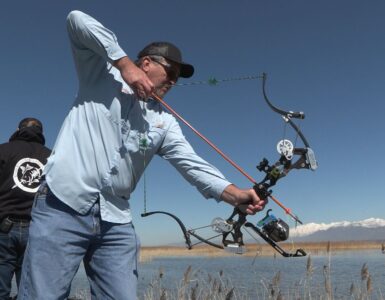Biologists with the DWR are meeting with sportsmen, landowners, elected officials, the Forest Service, and others that are concerned with the management of elk on the Wasatch unit.
John Fairchild, DWR Regional Supervisor) Some think we have plenty. Some think we don’t have enough. There’s a concern that we’ve let out too many permits for the number of elk that are here and there’s a real concern that the numbers that we are reporting are not being realized on the ground.
The DWR has a population objective of fifty five hundred elk for the Wasatch unit.
In 2013, the last time they flew the unit to count elk, biologists visually spotted over 8 thousand. They do this during the winter, when elk are most visible.
We took biologist Derrick Ewell for a ride in Chopper 5 and spotted about 800 elk in two hours. The question many sportsmen are asking is; “Where are these elk during the hunts?”
(Paul Phillips, Owner Strawberry Bay Outfitters) I’ve seen a definite decline the last four or five years in the amount of elk that we are chasing.
Paul owns Strawberry Bay Marina, and lives right in the middle of the unit. He’s also been guiding elk hunters for over 25 years. He is on the working group representing sportsmen.
(Paul Phillips, Strawberry Bay Outfitters) I think we need to look at how we count them. If we are counting private land elk that are inaccessible to the public. That helps the sportsman out..not at all. We need to really look at how we count them, where we count them, and not only that. How we issue cow tags and how we are hunting those elk that are inaccessible to the sportsman. We can’t just continue to throw tags at elk that are inaccessible to us.
(Paul Phillips) You have some huge, huge private lands over in the current creek area. Along that whole drainage along there. Where those elk, they don’t need to pass thru public lands. They can come off that winter range, they’ll stop right on the private lands where they have a safe haven and they are not getting pressured off.
(Paul Phillips) and you have similar situations on the west side with the Rony property and CWMU’S the Wallsburg area and all along the Heber area.
(Paul Phillips) They are inaccessible to us, but at the current count schedule. They are counted against us as sportsmen.
Last year the DWR issued just over sixty five hundred cow elk permits on the Wasatch. Hunters harvested one thousand four hundred and fifty elk, about a twenty two percent success rate. Wildlife managers issued these tags to try and control the population. Hunters claim their aren’t enough elk to continue issuing that many cow tags.
(Dax Mangus, DWR Wildlife Program Manager) To answer some of those questions. Are we counting the right elk when we are counting them on the winter range? We are starting a GPS collar study on elk and I think it’s the largest GPS study ever done on elk. It’s a huge study. 250 collars, on the Wasatch unit and on some of the surrounding units as well. To try and capture some of the movement between and among units. To help us make sure we are managing elk at the correct spatial scale. That’s going to answer questions. We’ll know are these elk that are wintering in these huge herds around Tabby Mountain. Are these elk on the Currant Creek Unit in the fall when we are hunting elk? Are some of them leaving and going to other units? Are they all on private land? It’s going to answer some of those questions and give us better tools, we are hoping to manage elk and harvest the right elk, the right places at the right time.
(Dax) and the reality is we going to come to some kind of middle ground. I suspect it will be something different than what we have now. Probably more elk, than what we have now. Based on the feedback that we have so far. but I also think there’s still guys that aren’t going to be happy with it. We are still going to have to harvest some elk. I don’t know if there is a way to make everyone happy but we want to bring everyone together. Get everyone on the same page and at least come up with something that everyone can live with and make the process more transparent and make the people understand, what we are up against and what the different interests are in how we manage elk.
(Paul Phillips) We are the best conservationists out in the field. We don’t want all of our elk killed. We will do whatever we have to. I’m sure in this meeting that we have that we can find some answers to solve some of the issues that we are having.
The committee will meet for the next three to four weeks and the division is hopeful that they’ll have a recommendation that they can present to the RAC’S, then the Wildlife Board for this season. But, more realistically, Dax tells me they are probably looking at the hunting season of 2016. However they are going to cut some cow hunts here on the Wasatch.
















Add comment